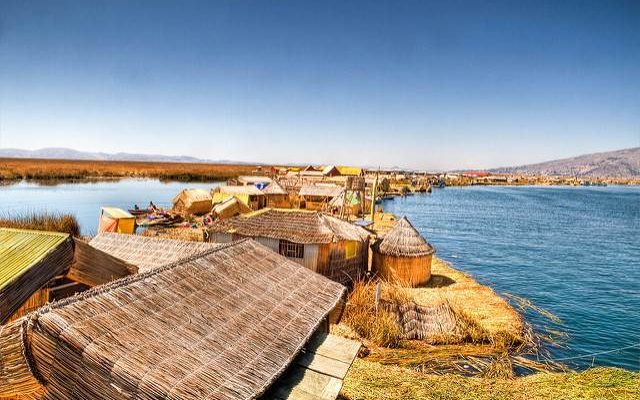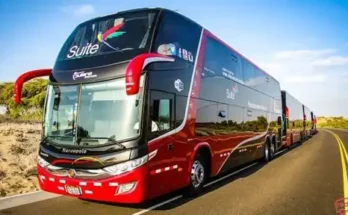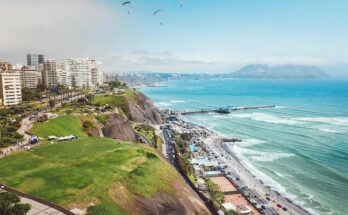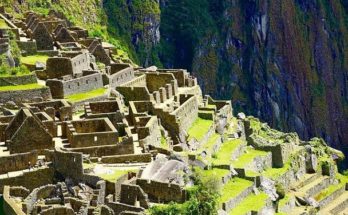Puno, Peru is definitely not a must-see city. Just over the border from Bolivia, it has a run-down border town feel. No doubt, it would be another one of those overlooked, “not a hostel in sight cities”, if not for the pretty unique lifestyle of the local native tribe – the Uros.
The Uros
Way before the Inka empire took over, the native people on this section of Lake Titicaca, the Uros, made the wacky decision to move their village out into the lake. The problem is that Lake Titicaca doesn’t have that many islands. The Uros solution – build new floating islands!
Archaeologists have suggested that the move was a defensive one. With floating, movable islands out in the lake, the Uros had less to fear from conquering tribes who saw the Uros as land-less and not worth defeating. This fact helped preserve the Uros way of life and their unique language for hundreds of years, even through rule by the powerful Inka empire. Unfortunately, the traditional Uros lifestyle has started to deteriorate due to an even more powerful force – tourism.
The Floating Uros Islands
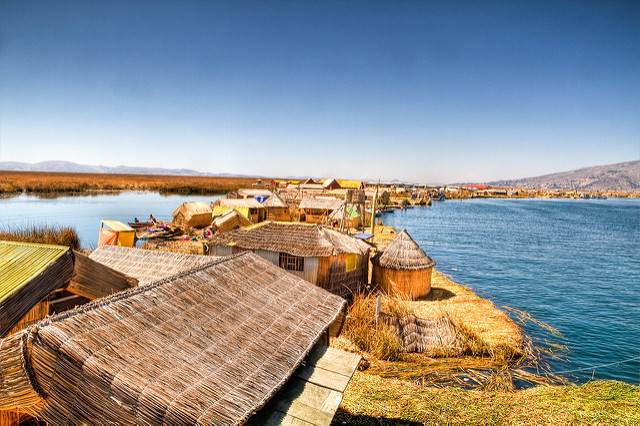
Visiting the Floating Uros Islands is quite an experience. Imagine a house boat, only built entirely out of thin water reeds. The local cattail like plant – Totora – is used in nearly ever aspect of Uros life. The Uros harvest the water reed, which grows in plentiful supply in the shallow waters of this part of Lake Titicaca, to build their homes, boats, and even to eat.
The base of the islands is actually made up of floating blocks of soil called Khili. The soil floats on the lake thanks to all the rotting totora reed roots in it. Once the totora packed soil is cut out of the reed fields, the blocks are strapped together and covered with even more layers of fresh totora reeds. The totora slowly rots in the lake water so it is imperative that new reeds are added to the top of the island often. The upkeep on the islands is actually very time consuming and islands usually have to be completely rebuilt every 30 years or so.
The small family homes on top of the islands are also made of totora reeds. The Uros even strap large bundles together to make their boats. These traditional boats can still be seen traveling among the islands but a lot of the locals have switched over to modern, aluminum boats for everyday use.
Visiting the Floating Islands
Visiting the Floating Island is very simple and it becomes apparent the minute you enter Puno that the islands form the vast majority of their tourist economy. Tours are sold at the bus station, the docks, and at every hotel or hostel.
Day Trips
Most people visiting the islands are on a day trip from Puno. Boats leave early in the morning from the Puno port and the journey out to the islands is about 30 minutes. Once on the islands, the island “president” will explain the process for building the floating islands. You are also usually offered a chance to taste the totora reed and to take a short ride in one of the traditional reed boats.
Day tours either head back to Puno in the early afternoon or continue on for a few more hours out to the real (actually rock and stone) islands further out in the lake. These islands give you a second chance to see native pre-Inka tribal traditions.
Overnight Home-stay
Recently, the Uros have begun erecting tiny “hotels” on the islands to accommodate travelers who want to spend more time on the floating islands. Not quite the hostel experience, but close enough. The overnight tours cover the boat trip to the islands and back, a simple fish dinner, and a night on one of the islands in a small reed home. Sleeping on the islands is suppose to be incredibly peaceful and visitors are often encouraged to join the fisherman at dawn for a beautiful sunrise over the lake.
The Floating Islands are an incredibly unique travel experience. That being said, the native culture has very much died away and the islands can seem very “Disneyland-eque.” Most of the Uros tribe has actually moved to the mainland due to the easier access to education and medical attention for their families. The few Uros who stay on the islands dress up in their traditional outfits for the tourists, but usually change back into jeans and t-shirts after they leave.
It is better to think of the islands as floating museums of native, pre-colonialism culture. While tourism has definitely played a large part in the deterioration of the traditional Uros culture, your tourist dollars have also helped the Uros to earn their place in Puno society, educate their children, and provide for their families.
